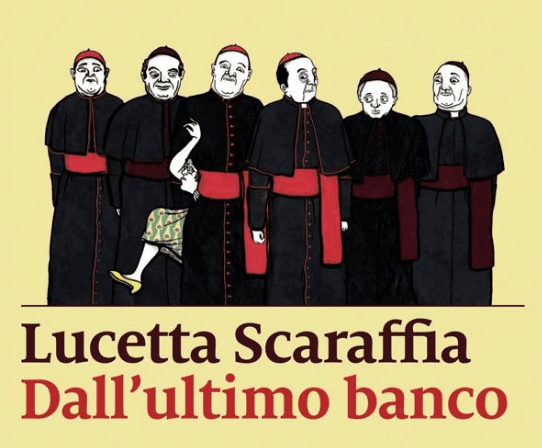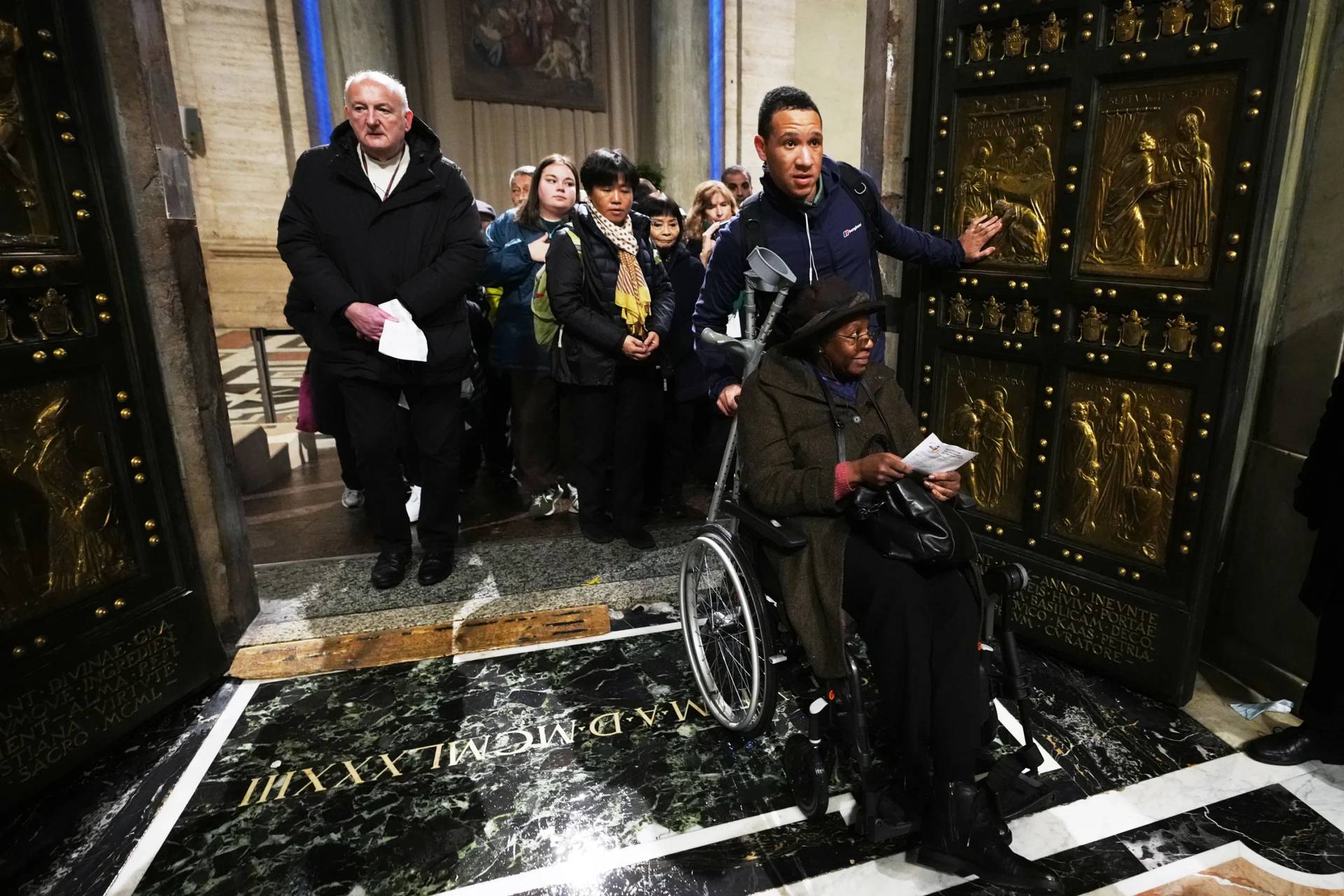ROME – Two months ago, an important Vatican milestone passed in basic silence. Oct. 15 marked the 40th anniversary of Inter Insigniores, a document of the Congregation for the Doctrine of the Faith issued under Pope Paul VI, which spelled out the reasons why women cannot be ordained as Catholic priests.
It came in response to the first ordinations of female clergy in the Anglican communion, and ever since it’s remained the basis for the Church’s position, although it was amplified and developed in St. Pope John Paul II’s 1994 document Ordinatio Sacerdotalis, in which the pontiff couldn’t have been more clear: “We declare that the Church has no authority whatsoever to confer priestly ordination on women, and that this judgment is to be definitively held by all the Church’s faithful.”
For the last forty years, the debate on women in the Church has largely revolved around a “yes” or “no” to these documents, i.e., yes or no to women priests.
Setting aside the rights and wrongs, here’s the political lay of the land. There’s a sizable portion of the Church that considers the exclusion of women from the priesthood a vestige of patriarchy, a glass ceiling, and they’ll never be convinced the Church is serious about equality unless that ceiling is shattered.
There’s another camp, also not small, which believes the whole discussion about a “women’s problem” is a canard, something cultured despisers of the Church use as an ideological weapon, and that, in reality, Catholic women are just fine.
In the middle is probably the largest chunk of folks, who grasp that arguing over women priests right now is a waste of breath, but who nevertheless recognize that Catholicism’s rhetoric about the “feminine genius” is not always matched by making women part of the decision-making process, and who regret that often the system at the top remains a “boy’s club.”
That group wants to talk about what can be done in the here-and-now to promote leadership by women in ways that don’t always come down to pointless theoretical disputes over a question that’s already been answered.
The problem for that realist constituency is that they’ve never quite had an effective champion, a serious intellectual with feminist credentials who can’t be dismissed as a stooge, and who also has a gift for sound-bites and effective argument.
Not, that is, until the emergence of Lucetta Scaraffia as possibly one of the ten or so most interesting figures in the contemporary Catholic Church.

Scaraffia is a veteran journalist and historian in Italy, forming half of a power couple, since her husband is the well-known journalist and intellectual Ernesto Galli della Loggia. Among other things, since 2012 she’s directed a special edition on women published by L’Osservatore Romano, the Vatican newspaper.
Earlier this year she published a book called Dall’Ultimo Banco: La Chiesa, Le Donne, e Il Sinodo, which translates as, “From the Last Row: The Church, Women and the Synod.” It offers her reflections on the 2015 Synod of Bishops on the family, to which she was invited as an auditor, and the title refers to the fact that she was literally seated in the very last row of the synod hall.
(Alas, the book is not yet available in English, but for those who read Italian it can be found on Amazon in Kindle format.)
In some ways, it’s hard to believe Scaraffia is kind-of, sort-of on the Vatican’s payroll, because she’s absolutely scathing in her indictment of the hierarchy’s failure to take women seriously.
Here’s a typical passage: “It’s before the eyes of everybody,” she writes, “that there’s an enormous gap between the real role women have in the work of evangelization, and their almost total absence in decision-making moments.”
Scaraffia is also tough on the Synod of Bishops, accusing prelates of tossing around abstract concepts developed in largely ecclesiastical contexts, without any real sense of history or of the lived realities of the family in the early 21st century.
Among other things, she recounts a conversation with a missionary nun with long experience in northern Africa during the synod, after several speakers had extolled Natural Family Planning. The nun, she said, explained that many African women can’t convince their husbands to have sex only during their infertile periods, and so for them the prohibition of the pill is a very practical burden.
“Yet the synod fathers didn’t seem interested in distinguishing situations, reducing everything to a merely theological problem,” she says. “It’s not their skin, not their bodies.”
She also scoffed at some of the defenses of the traditional family offered by prelates from the Middle East and Africa.
“In reality, these traditional families often exercise an oppressive power over women, and perhaps for that reason it’s not really a good idea anymore to propose them as a model,” she writes. “But these synod fathers are in the habit of thinking that in the Church, what women do and think doesn’t count for anything.”
Yet Scaraffia is no typical Catholic feminist, at least of the progressive sort. She strongly defends the Church’s basic position on artificial birth control, its stance on abortion, and on many of the other fronts of the sexual revolution.
She also regards the debate over women priests as a distraction, insisting, “The emancipation of women in the Church can, indeed must, be realized without passing through the priesthood.”
As Scaraffia sees it, Christianity actually has been history’s great motor force for the liberation of women.
In the early Church, she notes, many of the most important converts were wealthy widows who saw in Christianity a route to liberation, and the Church’s early patrimony was largely based on their property. The Christian understanding of marriage instilled a concept of equality between the partners, and over the centuries, women have played key leadership roles – Hildegard of Bingen preached in the Cologne cathedral, she notes, and St. Catherine of Sienna spoke at a synod where she was taken seriously indeed.
Putting on her historian’s hat, Scaraffia claims that writing a history of women actually is only possible “within the lone institution that took them seriously, that is, the Church. With abbesses, educated nuns and writers, the founders of orders and the saints, we have many sources that simply don’t exist for women in the secular world.”
All that began to change, Scaraffia says, only in the 19th and 20th centuries, when the press for women’s liberation got intertwined with the drive for sexual emancipation, which meant the Church and the leading women thinkers of the day found themselves progressively estranged.
Yet for 20th century examples of overcoming that estrangement, Scaraffia cites St. Edith Stein; Chiara Lubich, founder of the Focolare movement; and Adrienne von Speyr, the longtime theological collaborator of Hans urs von Balthasar.
So what would power without priesthood look like today? Almost offhand, Scaraffia cites several possibilities.
- Participation by women, both religious and ordinary laity, in the General Congregation meetings that precede the election of a pope.
- Participation by women, again both religious and lay, in meetings of bishops’ conferences around the world.
- Leadership by women in the departments of the Roman Curia within the Vatican.
- More regular consultation by the Vatican of the International Union of Superiors General, the umbrella group for leaders of women’s religious orders. Although its headquarters is just a stone’s throw from the Vatican, Scaraffia notes with evident sarcasm that it’s a “merely topographical closeness,” and that in fact the “contacts between the Holy See and the association are practically null.”
Though she doesn’t mention it in the book, Scaraffia floated another intriguing idea some time back: The pope could create a council of lay advisers composed of both men and women, analogous to his “C9” council of cardinal advisers, to ensure that the voices of laity and women are regularly part of his deliberations.
None of these possibilities have anything to do with priestly ordination. The fact that none of them has been taken up in a serious way, therefore, may speak more to ecclesiastical sociology and psychology than any limits imposed by Catholic doctrine.
The bottom line is this: Whatever one thinks of women priests, the status quo isn’t changing, a point Pope Francis has made repeatedly. If there is to be progress, it thus has to come elsewhere.
Right now, nobody’s showing what forward movement might look like better than Lucetta Scaraffia — who is herself, by the way, living proof that you don’t need a Roman collar to matter in Roman Catholicism.












